Affiliate links on Android Authority may earn us a commission. Learn more.
5 things you must know about next-gen smartphone processors
Published onMay 28, 2023
It’s the time of the year when Arm, the brains behind your smartphone’s chip, unveils the building block of next-gen SoCs from Qualcomm, MediaTek, and more. If you’ve been wondering what the upcoming Snapdragon 8 Gen 3 or Dimensity 9300 will look like, you’ve come to the right place.
During Arm Tech Day 2023, Arm unveiled a selection of new CPU cores covering high-performance and low-power use cases, along with its fifth-generation GPU, complete with ray tracing graphics support. So let’s run through the essential need-to-knows about all this cutting-edge technology.
Goodbye 32-bit (for real this time)
Before we even get into the new hardware, is a huge software implication. The latest Arm processors are all 64-bit-only, including the little cores. And no, there won’t be a 32-bit revision of any of these cores to keep legacy support kicking around a while longer.
As these latest Arm cores are all built on the latest ARMv9.2 architecture, any chip that uses them cannot mix in older architectures or 32-bit capable cores. The implication is that all future high-end smartphone chipsets and Arm SoCs in other segments, like laptops, will all be 64-bit only.
After years of nudging, we're finally entering the 64-bit-only era.
As drastic as this sounds, the groundwork has been laid for some time, and Arm now feels comfortable enough that the job is done in transitioning key ecosystems over already. Arm itself has been gradually nudging 32-bit out of the backdoor for several years, moving to 64-bit only in 2021’s Cortex-X2, followed by 2022’s Cortex-A715 mid-core. Likewise, Google has encouraged developers to update their apps to 64-bit since 2019 and only serves 64-bit apps to compatible devices as of August 2021.
Finally, after many years of expectation, 32-bit Android is finally at the end of the road.
A big core that won’t throttle back
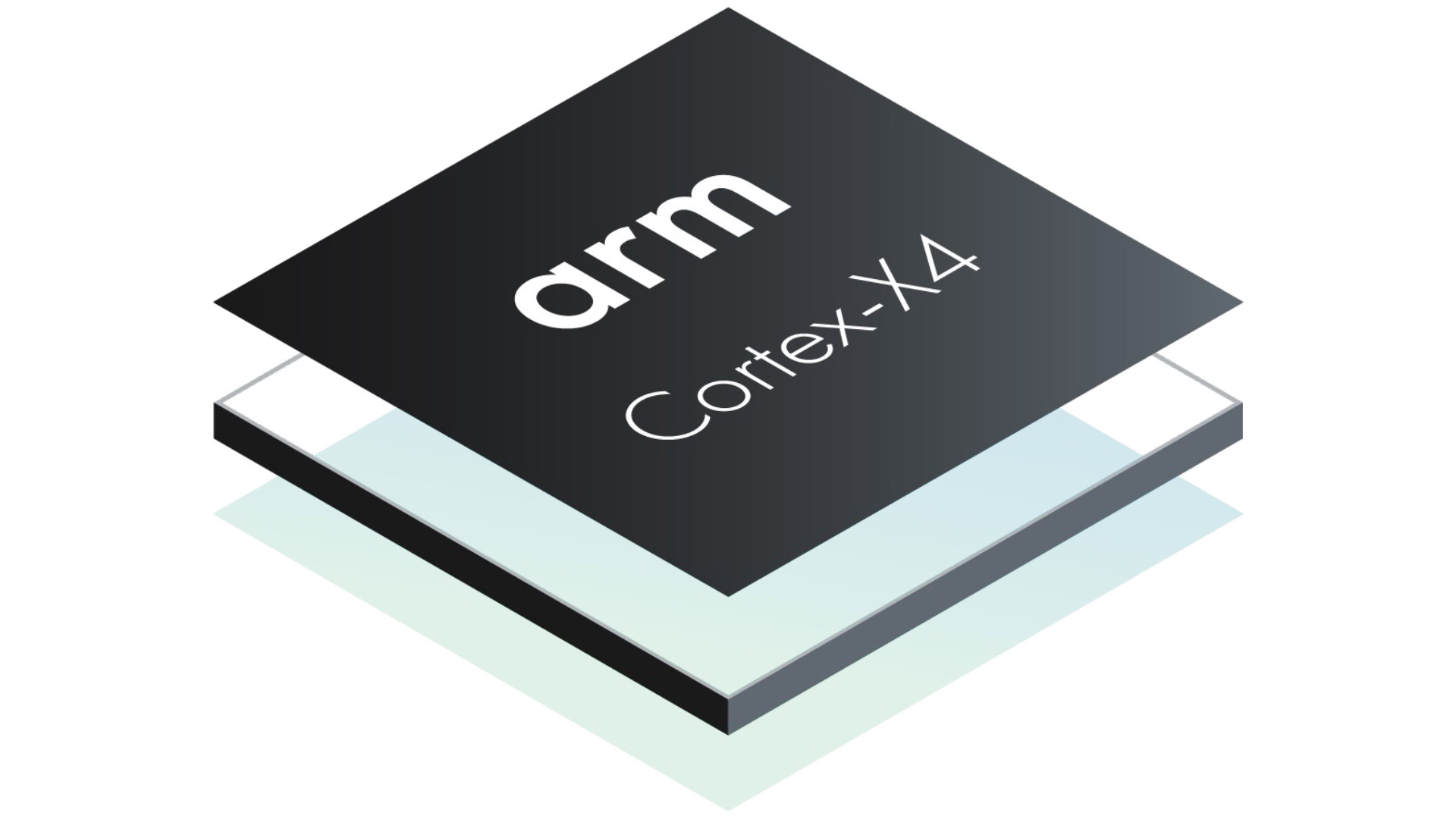
Three new CPU cores kickstart the actual hardware announcements: the powerhouse Cortex-X4, mid-tier Cortex-A720, and energy-efficient Cortex-A520. These follow from 2022’s Cortex-X3, A-715, and A510 cores that powered several flagship chipsets, including the Snapdragon 8 Gen 2.
Headline upgrades this year include an average of 14% more performance for a 3.4GHz Cortex-X4 over a typical 3.25GHz X3 found in the 8 Gen 2, when comparing single-threaded workloads on the same manufacturing node. More impressive is a 40% reduction in power consumption for the same performance as a Cortex-X3. Again, that’s before you factor in the looming shrink-down to next-gen 3nm manufacturing processes. However, pushing performance far past the X3 eventually increases power consumption above the last-gen model.
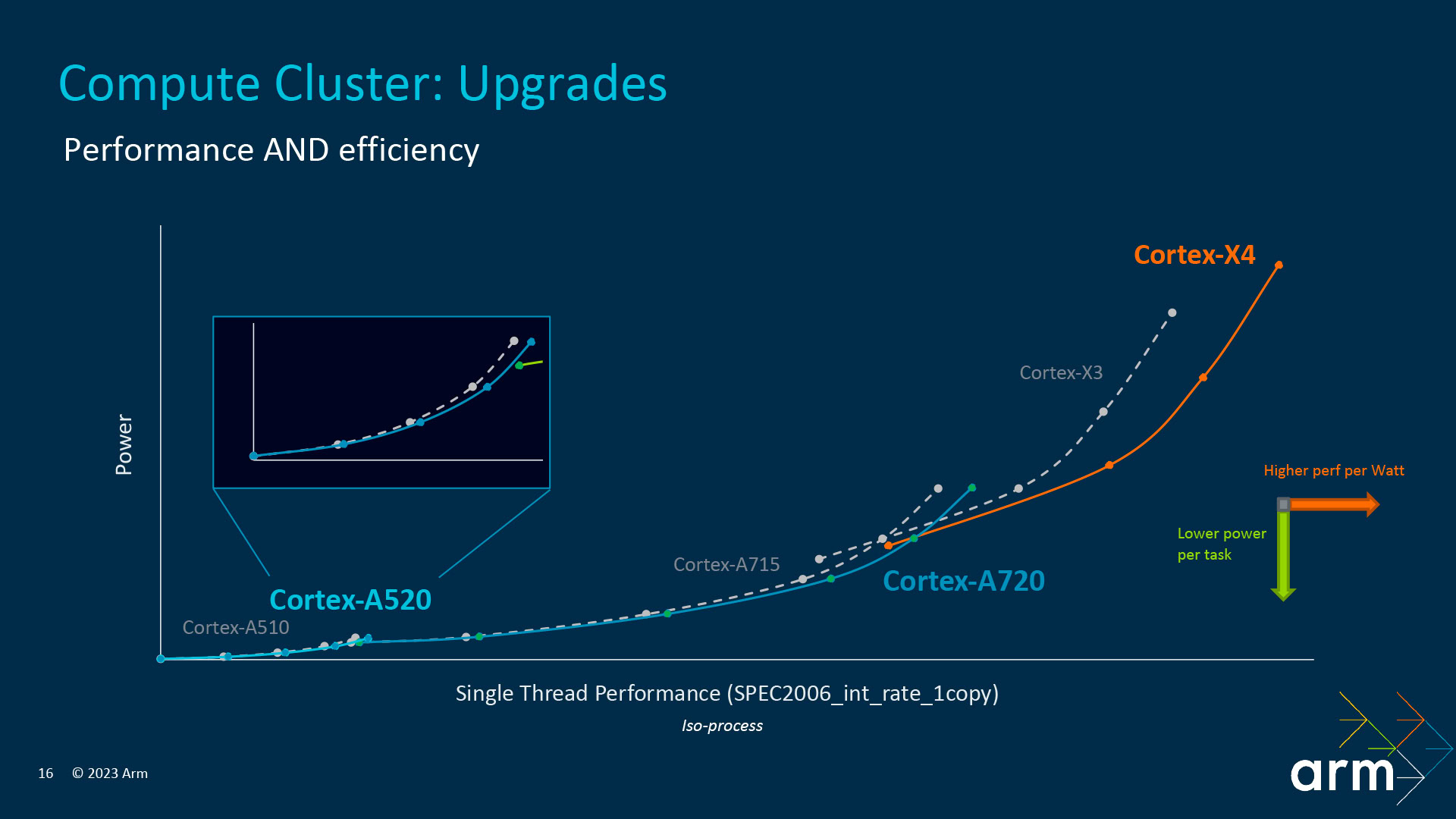
Even so, that’s good news for those concerned about thermal performance and battery life when running these big cores flat out. This vast improvement also opens the door to include two or more powerhouse Cortex-X4 cores in a CPU cluster without a huge hit to battery life and heat generation. Keep an eye out for that one.
The long and the short of how Arm has achieved these gains is a wider instruction width and re-designed instruction fetch, essentially allowing the core to do even more per clock cycle. And all that with just a 10% area growth over last year. Impressive stuff. You can read our Cortex-X4 deep dive for a closer at how all these smaller changes work.
Smaller cores to keep your phone running longer
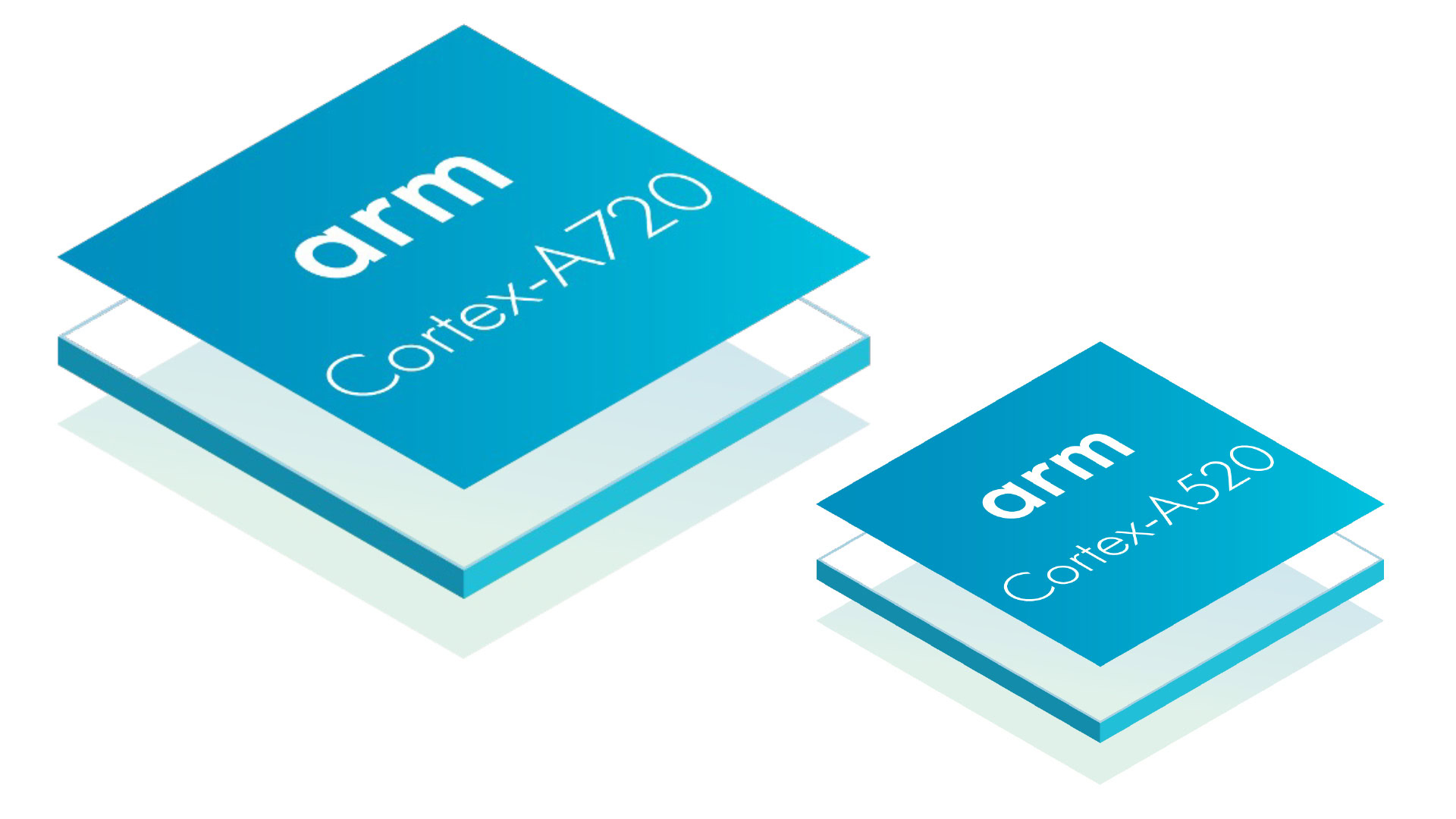
The Cortex-X720 is more optimization than renovation, compared to the X4. However, that shouldn’t diminish the work done to improve this often overlooked but incredibly important middle-core.
The CPU core is 20% more power efficient than last year’s Cortex-A715 core, on a like-for-like manufacturing basis and targeting the same performance point. Alternatively, the chip can provide 4% more performance for the same power consumption. The key to this design win lies in shorter and more efficient pipelines, implementing a version of the Cortex-X series’ spatial-prefetch engine to bring instructions into the core more optimally.
Arm has also opened the door to a broader range of Cortex-A720 implementations this year. Not just in terms of cache size but also by physically shrinking, but not removing, components to save on silicon area. In its smallest configuration, the Cortex-A720 can be configured down to the same size as 2020’s Cortex-A78 core, while providing 10% more performance and all of ARMv9’s security and other benefits. We don’t expect to see this in smartphones due to the performance penalty, but it will be a boon for industries where silicon area size is the limiting factor.
More efficient CPU cores are set to be a boon for battery life.
Rounding out Arm’s CPU announcements is a new energy-efficient CPU core, the Cortex-A520. Again, with a 22% efficiency gain over last year’s A510 design and potentially more to come with the more to smaller manufacturing nodes, your smartphone’s battery should last much longer next year.
Interestingly, Arm has taken out one number-crunching unit (ALU) this year, which is where most of the core’s power savings come from. Its engineers clawed back extra performance from new data prefetch and cache improvements, allowing the chip to provide 8% more average performance than last year’s model, for the same power. Unlike last year’s 32-bit revision, the A520 is a 64-bit-only little CPU.
Weird and wonderful core designs are coming?
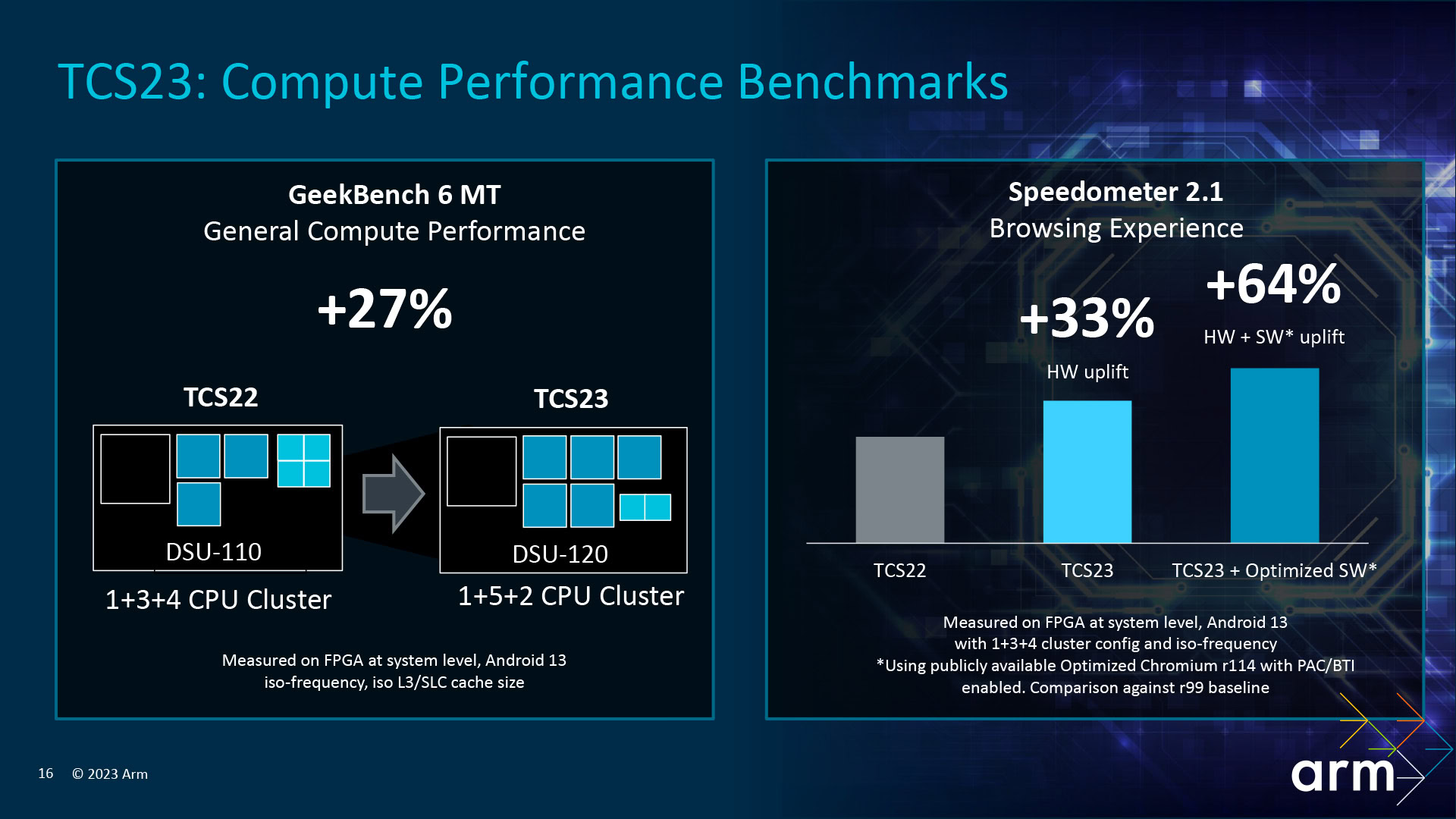
It’s been over ten years since Arm debuted the big.LITTLE CPU cluster architecture, which evolved into 2017’s more flexible DynamIQ fabric to accommodate modern triple core-type designs. In that time, CPU capabilities have changed, with peak performance skyrocketing along with vast improvements in energy efficiency. As a result, early 4+4 CPU core designs have made way for 1+4+3, 2+2+4, and other cluster variations. The increased energy efficiency and sustainable performance of today’s middle cores, like the Cortex-A720, could mean this paradigm is about to shift again.
For instance, Arm showcased an intriguing 1+5+2 setup during its presentation. While purely a theoretical example, introducing five middle CPU cores would provide extra sustainable threads for improved gaming performance, which benefit from multi-threaded capabilities but don’t require the X series cores’ hefty single-core grunt (and power draw).
Greater diversity in CPU cluster setups might help phones push for higher performance without a battery hit.
Likewise, the cumulative performance improvements of Arm’s littlest cores, like the new Cortex-A520, means you don’t necessarily need four to run background tasks, such as checking messages. Three or perhaps even two might do. While we’re on the topic, the latest version of DynamIQ now supports 14 cores per cluster, but such a vast setup is intended for laptop rather than smartphone use cases.
Of course, CPU layouts are entirely up to Arm’s silicon partners, such as Qualcomm, Samsung, etc, who may or may not have identified similar trends. Snapdragon 8 Gen 3 leaks certainly suggest they may have. Either way, it’s certainly interesting that Arm is mulling over the merits of these designs internally. The CPU performance/efficiency landscape has changed, and we could see CPU cluster designs evolve with it soon, if not this year.
Next-gen Immortalis graphics
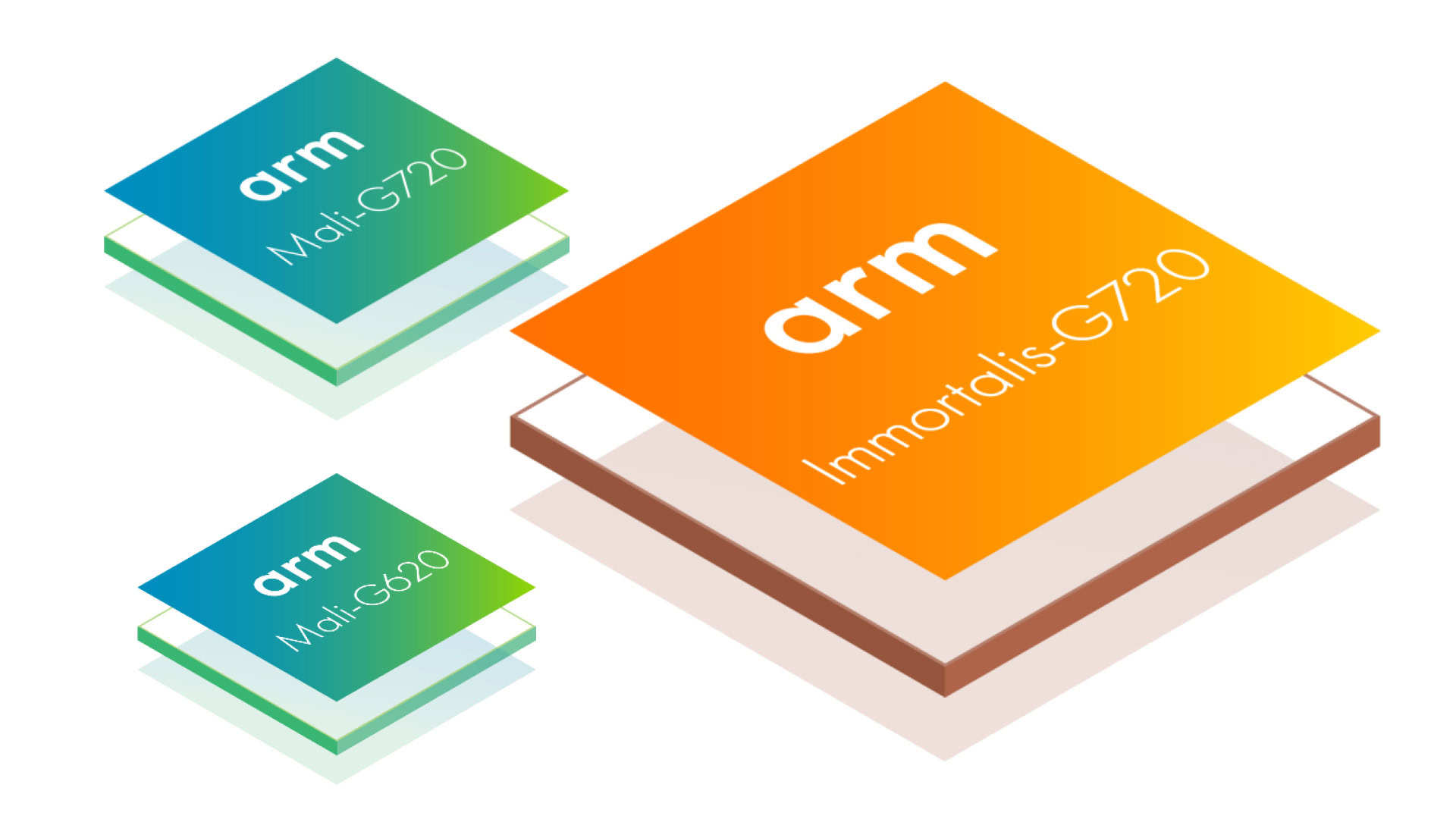
It wouldn’t be an Arm launch without new graphics components; Arm has three new entries spanning mid to premium tiers of the market. All three are built on Arm’s 5th Gen GPU architecture, boasting 14% performance and 40% less memory bandwidth improvements over the previous generation. All in just 2% more area per core than last year.
Arm Immortalis G720 is the flagship product, with a core count scaling ten through 16, along with mandatory ray-tracing capabilities. The regular Mali-G720 can be built with 6 to 9 cores. It can also include ray tracing, but Arm doesn’t recommend this as the lower core count won’t necessarily produce a great ray tracing experience. Remember, Arm includes a ray tracing unit within each shader core, so performance scales with core count. Last but not least, the Mali-G620 is a more affordable option, with five cores or fewer. Still, this configuration fits in the same area as the Mali-G510 but offers more performance and features.
Ray tracing is now a staple of Arm's mobile graphics roadmap.
Check out our Arm 5th Gen architecture deep dive for all the low-level details. But the big change to note is a refinement to the core’s deferred rendering pipeline. Arm now defers Vertex as well as Fragment shading, in most instances, which helps prevent excessive re-shading and reduce calls out to memory. Hence the performance boost and drastically lower memory bandwidth metrics, the latter of which is particularly important for saving power. With that in mind, we might find SoCs sporting larger GPU core counts for higher performance without the hit to battery life.
We’ve started taking Arm’s double-digit performance gains for a given in recent years. However, it’s still mightily impressive that next-generation smartphones and Arm-based PCs will continue to see large performance gains over devices that only launched within the last twelve months. We expect to see smartphones powered by Arm’s latest CPU and GPU core designs launch around the end of 2023.